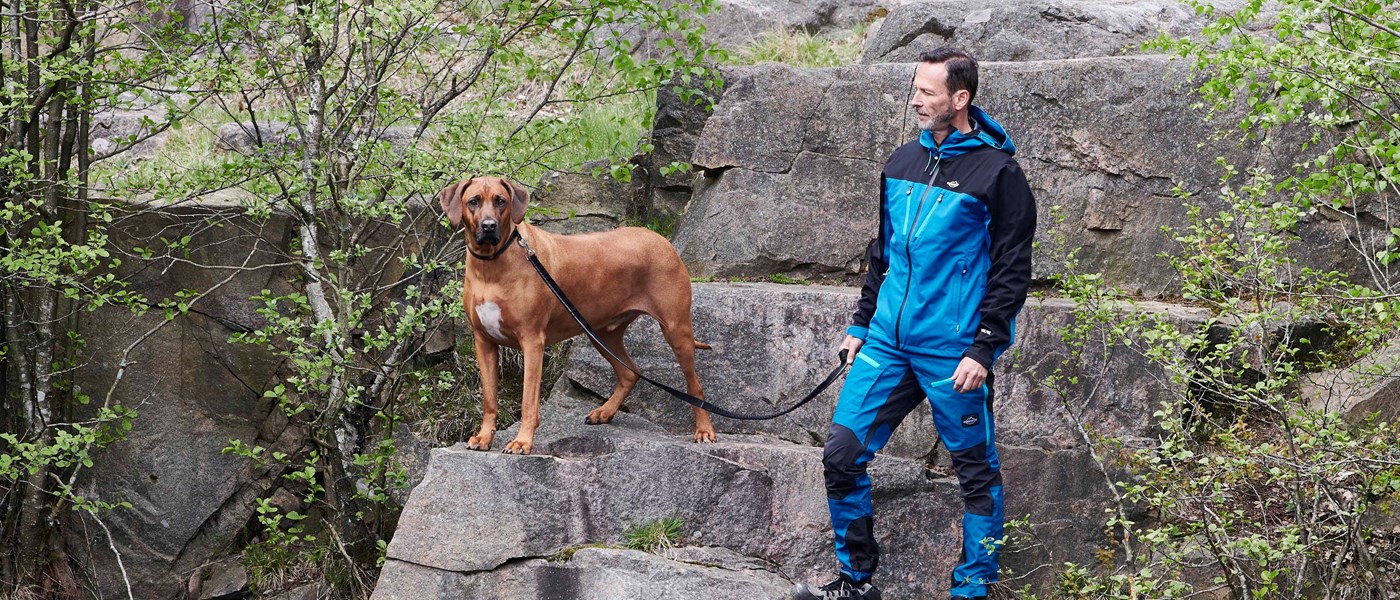Layer on layer- from head to toe tå!
Clothes for the weather is the famous saying and surely it has saved the day more times than you can remember? The right clothes for your trip out are a prerequisite for the day to be good, and for everyone to keep their spirits up. None of us want to freeze or walk around and get wet, and risk contracting an unnecessary cold.
So, how should one think when dressing for a day in nature?
In addition to weather and wind, of course, your activity also determines how much, and what clothes you should wear. You should also think layer-on-layer.

Camping - Explore nature with camping

Hunting - Take your dog for a hunt

Enjoy - Take a picnic out into the woods
The layer-on-layer method
Most activities in nature have one thing in common, and that is it is an advantage to dress according to the layer-on-layer method. Then you can easily adjust your outfit depending on whether you get too hot or start to freeze.
Layer 1 - warm and dry with underwear
Layer number one is the layer that you have closest to the body. It is the layer that will keep you warm and dry from the inside. This layer often consists of an undergarment, where the material is crucial for how it keeps warm and how comfortable it is. This layer should be clothing that you can easily move around in and that is easy to wear.
The best is underwear made of synthetics or wool.
Synthetics
Underwear in synthetics quickly transports away moisture and excess heat and therefore works perfectly during physical activities where you sweat a little more. Synthetics are a durable material, which means that you will enjoy your underwear for a long time.
Wool
Underwear in wool is an advantage to have when you are out and hiking, for example. The wool material absorbs the moisture that forms through the body, without you the getting any feeling of wetness. The wool transports moisture away from your skin and keeps you warm. Woollen undergarments are extra comfortable to use in the winter, when it is colder in the air. Wool is also a nice material to wear on your feet.
Here you find our undergarments
Layer 2 - intermediate layer that heats
Now it's time to put on the layer that will warm you the most. Here you can use one or more items of clothing, depending on how cold it is outside and how likely you are to start freezing. An advantage of dressing with layers-on-layers is, as is well known, that if you happen to put on too much clothing, you can easily undress one layer during the day. And if you start freezing again? Yes, then just put another layer on.
Often the second layer consists of fleece or wool, which are two materials that warm well.
Fleece
A fleece jacket or fleece sweater warms nicely because the material is porous and airy, and is thus warmed by your own body heat. A fleece jacket is therefore excellent if you are out and about alternating between moving and sitting still, because you benefit from the excess heat that was formed when you were active. Fleece material is also effective when it comes to transporting moisture away.
Wool
Unlike fleece, wool is warming in itself and does not need body heat to warm you up. Therefore, a wool sweater is perfect when you are out fishing or hunting and maybe sitting still for longer periods of the day. The wool also absorbs a lot of moisture, without you feeling that the garment becomes wet and heavy.
Warm yourself up with one of our fleece jackets
Layer 3 - the shell that protects against rain and wind
The last layer, and also the outermost, is the layer that will protect you from wind, water and cold. Therefore, the clothes should preferably be wind and water resistant. It is also important that the last layer is ventilated, so that you do not get too hot or too cold.
The outer layer usually consists of a shell jacket, wilderness jacket, rain jacket or a lined jacket. Of course, a pair of wilderness trousers, rain trousers, coveralls or thermal trousers are also included in the outer layer.
You should find a jacket and trousers in modern functional material, which allow the moisture from your body and the lower layers to pass. If you sit still and do not sweat so much during the day, you can also wear outerwear made of PVC, but keep in mind that the PVC does not breathe as much, so during activity it gets slightly damp and cold along the body.
You should think about finding shell garments with a higher neck, hood and long enough sleeves and legs, so that you do not freeze on those body parts when you are out.




